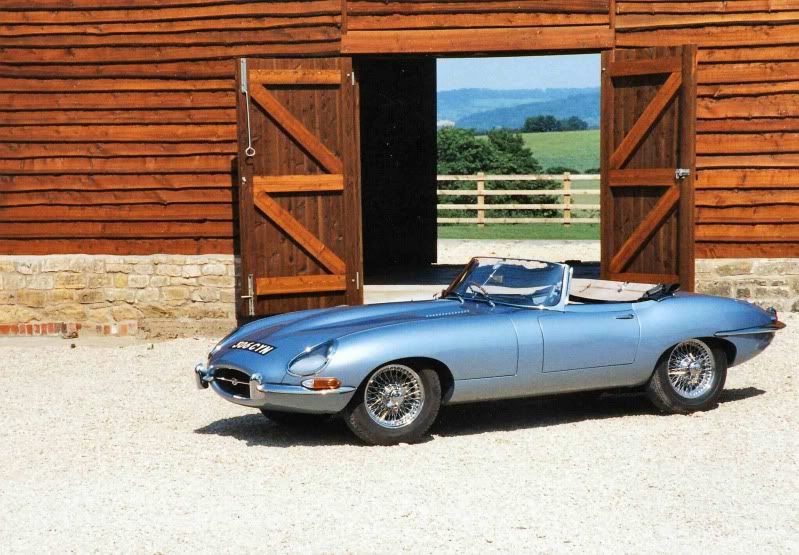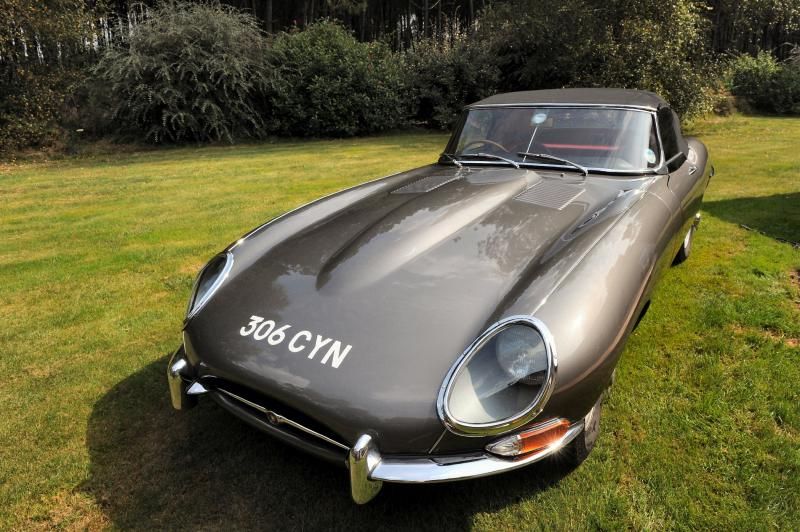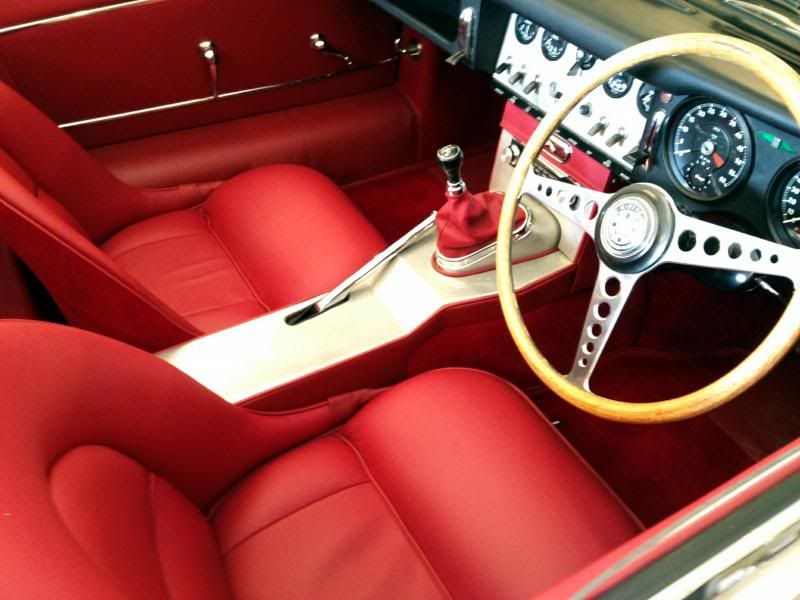Exterior colour changes on classics?
Discussion
My car has been grey metallic, maroon, mustard yellow, blue and now back to square one. It was hand-painted yellow when I bought it, then when I had it rebuilt in 1987 I took a big piece of metal, quartered it with duct tape and bought a load of cans of paint. Some never got to a quarter, some got to a half, but very few got to the full panel. In the end she ended up like this from 1987 until 2013.

I loved that colour, Ford Glacier Blue, but somehow when time came to rebuild her again I felt I owed it to her to put her back to her original colours, so here she is now:-


I loved her in that delicate shade of blue and it took a while to get used to the new colour scheme, but whatever, I am pleased that she is back as she came out of the factory. But does it really matter? Do what pleases you, not what others say.

I loved that colour, Ford Glacier Blue, but somehow when time came to rebuild her again I felt I owed it to her to put her back to her original colours, so here she is now:-


I loved her in that delicate shade of blue and it took a while to get used to the new colour scheme, but whatever, I am pleased that she is back as she came out of the factory. But does it really matter? Do what pleases you, not what others say.
Yesterday I was next to an obviously very recently restored XK 140 convertible. I complimented the owner through slightly gritted teeth and asked him if it was the original colour combination. No twasn't
He has managed to choose a really wrong pale blue that falls between every shade of blue ever used by Jagwah; and to compound his crime ghastly high back seats with headrests and even more awful chrome wire wheels.
It just looked wrong, such a shame to saddle such a beautiful car with the wrong finish
He has managed to choose a really wrong pale blue that falls between every shade of blue ever used by Jagwah; and to compound his crime ghastly high back seats with headrests and even more awful chrome wire wheels.
It just looked wrong, such a shame to saddle such a beautiful car with the wrong finish
Allow me to wade in with my, reasonably knowledgable, thoughts.
It really depends on what you want to do with the car, and of course, the provenance of it in the first place. Many 1960's DB Astons have, of course, been repainted Silver Birch for the obvious reason, and there is no denying that a DB5 painted as such will sell much more easily. That is assuming that the job has been done correctly and the colour IS actually Silver Birch! However, the market is increasingly looking for originality these days, and I see lots of "restored" cars not selling because they have lost their patina. I agree that on a classic that is plentiful in number, such as MG's and Triumph's, a colour change isn't the end of the world, and the relative difference in value lost by a respray can be negligible. On a £500,000 car however, it can be much more significant, and when we reach figures of seven or more, it is essential that the originality is in tact.
I have recently written an article for a magazine commenting on just this very subject, and auction results back at the start of the year certainly indicated that the market wanted cars that retained original and patinated condition. It is worth remembering, however, that up until the 1980's, there really wasn't a classic car market as such. You just had new cars and old cars, and many of the old cars, no matter what they were, will have had some form of change as part of their life cycle. I was often asked whether the classic Astons I was selling were matching numbers, for instance, but the truth was many cars had their engines replaced over time due in some part to fragility that was a common factor of an old car. It has been said on here previously too, that paint technology has changed over the years, so even respraying the original colour will not EXACTLY be a true representation.
I suppose in answer to the original question is, yes it will have some effect on the car's value, but that will depend on the market value, and also whether you stick to the manufacturer's colour palette of the period, or you try to "modernise" it. If you are planning on selling the car and want to maximise its value, stick with originality. If you want to keep it and enjoy it, by all means change it, but I would urge you to be sympathetic with the colour choice.
Hope that helps in some way!
It really depends on what you want to do with the car, and of course, the provenance of it in the first place. Many 1960's DB Astons have, of course, been repainted Silver Birch for the obvious reason, and there is no denying that a DB5 painted as such will sell much more easily. That is assuming that the job has been done correctly and the colour IS actually Silver Birch! However, the market is increasingly looking for originality these days, and I see lots of "restored" cars not selling because they have lost their patina. I agree that on a classic that is plentiful in number, such as MG's and Triumph's, a colour change isn't the end of the world, and the relative difference in value lost by a respray can be negligible. On a £500,000 car however, it can be much more significant, and when we reach figures of seven or more, it is essential that the originality is in tact.
I have recently written an article for a magazine commenting on just this very subject, and auction results back at the start of the year certainly indicated that the market wanted cars that retained original and patinated condition. It is worth remembering, however, that up until the 1980's, there really wasn't a classic car market as such. You just had new cars and old cars, and many of the old cars, no matter what they were, will have had some form of change as part of their life cycle. I was often asked whether the classic Astons I was selling were matching numbers, for instance, but the truth was many cars had their engines replaced over time due in some part to fragility that was a common factor of an old car. It has been said on here previously too, that paint technology has changed over the years, so even respraying the original colour will not EXACTLY be a true representation.
I suppose in answer to the original question is, yes it will have some effect on the car's value, but that will depend on the market value, and also whether you stick to the manufacturer's colour palette of the period, or you try to "modernise" it. If you are planning on selling the car and want to maximise its value, stick with originality. If you want to keep it and enjoy it, by all means change it, but I would urge you to be sympathetic with the colour choice.
Hope that helps in some way!
MrB. said:
Allow me to wade in with my, reasonably knowledgable, thoughts.
It really depends on what you want to do with the car, and of course, the provenance of it in the first place. Many 1960's DB Astons have, of course, been repainted Silver Birch for the obvious reason, and there is no denying that a DB5 painted as such will sell much more easily. That is assuming that the job has been done correctly and the colour IS actually Silver Birch! However, the market is increasingly looking for originality these days, and I see lots of "restored" cars not selling because they have lost their patina. I agree that on a classic that is plentiful in number, such as MG's and Triumph's, a colour change isn't the end of the world, and the relative difference in value lost by a respray can be negligible. On a £500,000 car however, it can be much more significant, and when we reach figures of seven or more, it is essential that the originality is in tact.
I have recently written an article for a magazine commenting on just this very subject, and auction results back at the start of the year certainly indicated that the market wanted cars that retained original and patinated condition. It is worth remembering, however, that up until the 1980's, there really wasn't a classic car market as such. You just had new cars and old cars, and many of the old cars, no matter what they were, will have had some form of change as part of their life cycle. I was often asked whether the classic Astons I was selling were matching numbers, for instance, but the truth was many cars had their engines replaced over time due in some part to fragility that was a common factor of an old car. It has been said on here previously too, that paint technology has changed over the years, so even respraying the original colour will not EXACTLY be a true representation.
I suppose in answer to the original question is, yes it will have some effect on the car's value, but that will depend on the market value, and also whether you stick to the manufacturer's colour palette of the period, or you try to "modernise" it. If you are planning on selling the car and want to maximise its value, stick with originality. If you want to keep it and enjoy it, by all means change it, but I would urge you to be sympathetic with the colour choice.
Hope that helps in some way!
Interesting comments.... DB6 I sold last year wasnfitted with a Jaguar engine, the original was in a wheelbarrow next to the car!It really depends on what you want to do with the car, and of course, the provenance of it in the first place. Many 1960's DB Astons have, of course, been repainted Silver Birch for the obvious reason, and there is no denying that a DB5 painted as such will sell much more easily. That is assuming that the job has been done correctly and the colour IS actually Silver Birch! However, the market is increasingly looking for originality these days, and I see lots of "restored" cars not selling because they have lost their patina. I agree that on a classic that is plentiful in number, such as MG's and Triumph's, a colour change isn't the end of the world, and the relative difference in value lost by a respray can be negligible. On a £500,000 car however, it can be much more significant, and when we reach figures of seven or more, it is essential that the originality is in tact.
I have recently written an article for a magazine commenting on just this very subject, and auction results back at the start of the year certainly indicated that the market wanted cars that retained original and patinated condition. It is worth remembering, however, that up until the 1980's, there really wasn't a classic car market as such. You just had new cars and old cars, and many of the old cars, no matter what they were, will have had some form of change as part of their life cycle. I was often asked whether the classic Astons I was selling were matching numbers, for instance, but the truth was many cars had their engines replaced over time due in some part to fragility that was a common factor of an old car. It has been said on here previously too, that paint technology has changed over the years, so even respraying the original colour will not EXACTLY be a true representation.
I suppose in answer to the original question is, yes it will have some effect on the car's value, but that will depend on the market value, and also whether you stick to the manufacturer's colour palette of the period, or you try to "modernise" it. If you are planning on selling the car and want to maximise its value, stick with originality. If you want to keep it and enjoy it, by all means change it, but I would urge you to be sympathetic with the colour choice.
Hope that helps in some way!
As originally built, my vintage Morgan was black beetle and cowl (upper body panels) and cream skirt (lower panel) and wheels. However, not only would that be a difficult car to keep clean, it was repainted green quite early on, possibly before WW2 even.
The bloke I bought the car from changed the colour to a blue, thought to be Ford anchor blue in the early 60s. He did though splash the red about and numerous small bits were so coloured.
When I rebuilt the car at the turn of the century, I did give serious thought to returning to the original, but decided against it because it was only ever going to look right just after cleaning. So I repainted it green, and matched a brushing paint to Bentley brunswick green as that is the colour of most Cricklewood Bentleys that Stanley Mann got his hands on.
It is however a small car, and should somebody later want to change the colour, it's not that much work. Spraybooth not required - Morgan were still brush painting some cars as late as the 1950s.
The bloke I bought the car from changed the colour to a blue, thought to be Ford anchor blue in the early 60s. He did though splash the red about and numerous small bits were so coloured.
When I rebuilt the car at the turn of the century, I did give serious thought to returning to the original, but decided against it because it was only ever going to look right just after cleaning. So I repainted it green, and matched a brushing paint to Bentley brunswick green as that is the colour of most Cricklewood Bentleys that Stanley Mann got his hands on.
It is however a small car, and should somebody later want to change the colour, it's not that much work. Spraybooth not required - Morgan were still brush painting some cars as late as the 1950s.
Edited by Slidingpillar on Monday 4th July 17:51
Gassing Station | Classic Cars and Yesterday's Heroes | Top of Page | What's New | My Stuff


